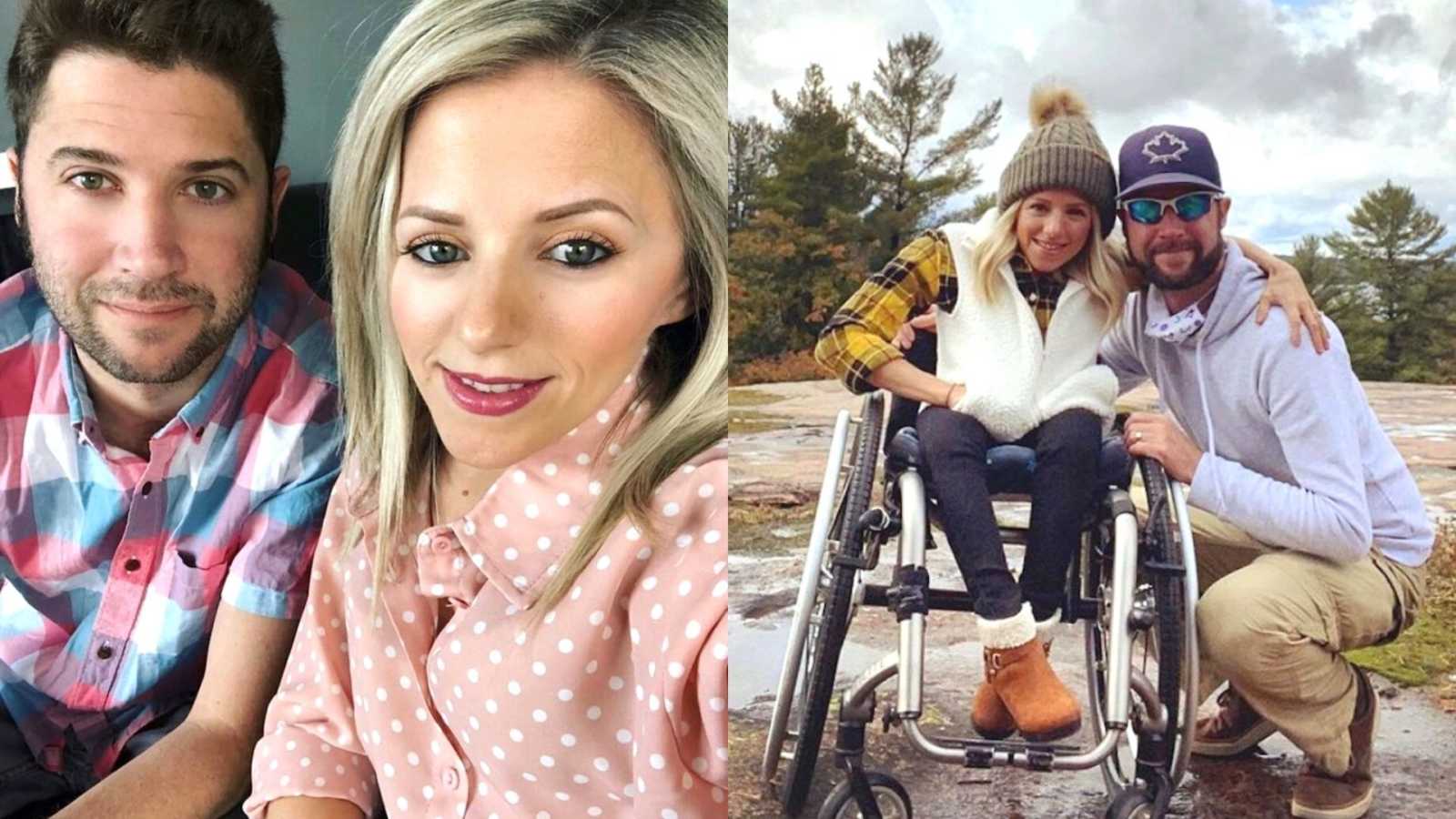“I’m 3’6”, I can’t walk. I’ve broken close to 100 bones, have had over a dozen surgeries, and am a full-time wheelchair user. I’m also a wife, an aunt, a speech-language pathologist, a world traveler, adventure-seeker, and a passionate disability advocate. I’ve created a life I love and am so proud of; one that also contradicts so many assumptions and beliefs from society.
Let me start this story at the beginning. Like most babies, I came into the world screaming and crying, but as the delivery doctors quickly identified, this baby had very good reason — my left femur was swollen and noticeably broken. I was whisked away to the large Children’s Hospital downtown where x-rays revealed multiple healing fractures that had occurred in utero. I was placed in an incubator for close monitoring and was diagnosed with Osteogenesis Imperfecta (OI). Simply described, OI is a rare genetic condition characterized by fragile bones that break easily. In my case, there was no family history of OI. I was a spontaneous mutation. My parents knew nothing about OI until they first heard these words from the obstetrician. Still in the hospital, recovering from the delivery, without her newborn baby in her arms, my mom received the news, hours after my birth.
‘There’s a problem with your daughter.’
My mom shot straight up in bed, ‘Is she going to live?’
‘Well yes, the severity of her condition is not fatal, but…’ As my mom tells me this story many years later, she says that’s really all she needed to hear.
I was going to survive, I was going to be in their lives, I was going to be loved, and in that moment, that’s all that mattered.
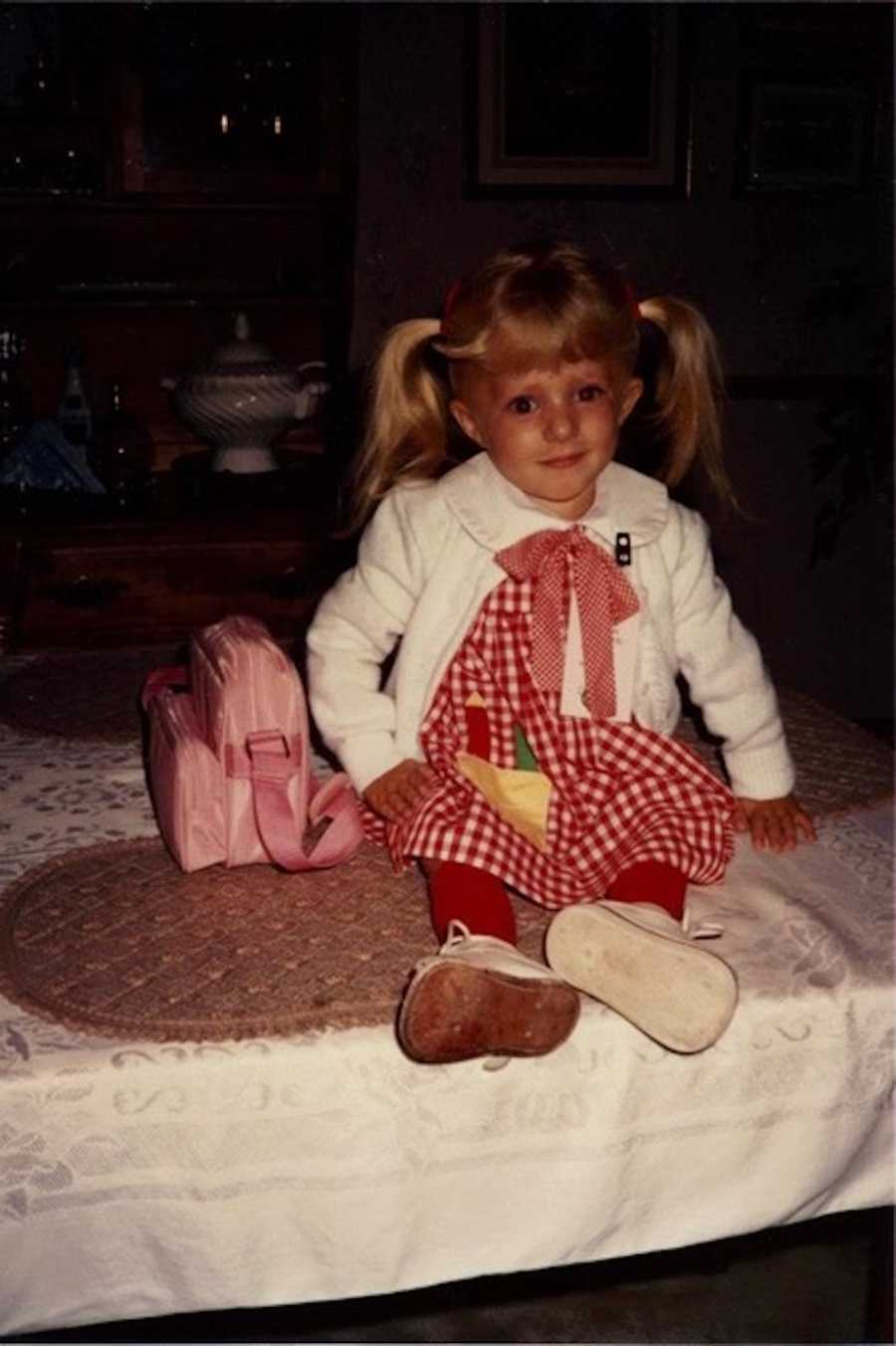
This presence of a calm, confidence is exactly how I remember being raised. Growing up with OI, many aspects of my childhood were just like any other kid. I liked to play with my friends, I loved being outdoors, I loved to sing and dance. I bickered with my older brother, I’d get in trouble sometimes. But as a child, I also broke a LOT. Sneezing, turning over in bed, crawling to my parents’ room on Christmas morning – all simple activities that resulted in fractures. I spent many months as a child in casts from my toes up to my armpits, lying flat on my back, washing my hair in the kitchen sink. I remember moments of terribly intense physical pain, but I also remember the care from family and friends, my mom’s comforting voice, and being so excited for really simple joys – getting a card in the mail, lying in the sunshine, cheese pizza. Now, as an adult when life gets busy and I feel myself wanting more and appreciating less, I bring myself back to the times when I was so happy with these seemingly little moments, and it helps me to find gratitude in every day.
When I was 3 years old, I was fitted for my first wheelchair. Bright yellow, with a sign that hung between the push handles over my head reading, ‘Fragile! Handle With Care!’ I was able to walk on and off as a kid, but it seemed every time I got back up on my feet, I’d end up with another broken leg. My arms have always been so much stronger and so a wheelchair made sense for me. I’ve always had a great love for my wheels and I am so grateful my parents never hesitated on finding alternative ways to get me mobile. My wheelchair is freeing. It allowed me to keep up with my friends at school, and now to do my job at work. It allows me to be out and about in my community (provided there is wheelchair accessibility of course), to socialize, and to take care of many day-to-day tasks.

3 years old was also when I started school. It was the late 1980s and my parents made the decision to send me to a school for kids with physical disabilities. Today, parents fight endlessly and tirelessly to have their disabled children integrated and included in typical neighborhood schools. I absolutely believe that integration is good; of course, it’s common sense, kids and adults with disabilities should be able to exist and thrive in the same neighborhood, same buildings, same schools as those without disabilities. But for me, 11 years at my segregated elementary school worked. I learned how to live with a disability because I saw others around me doing it too. Because of my disabled classmates, I learned about wheelchair sports, accessible recreation programs, accessible transportation, the latest in wheelchair innovations, and accessible technology.
I learned from my disabled friends how to climb onto countertops, carry my books, push with my elbows, and bump myself down curbs. I learned that different and awkward can still work pretty well and is actually okay and normal. And with all this, I learned confidence, compassion, and humility. I developed a strong sense of self and sense of pride and I took this foundation with me when I entered my neighborhood high school of 2000 students, and as I went on to University and Grad School, interviews, dating, and now in my career. I am so grateful I was exposed to the disability community early on and developed a sense of disability pride I believe has helped me recognize ableism and combat sneaky internalized ableism. (Ableism refers to discrimination or prejudice against individuals with disabilities, and internalized ableism refers to disabled people believing negative misconceptions and false assumptions about themselves that are reinforced by society).
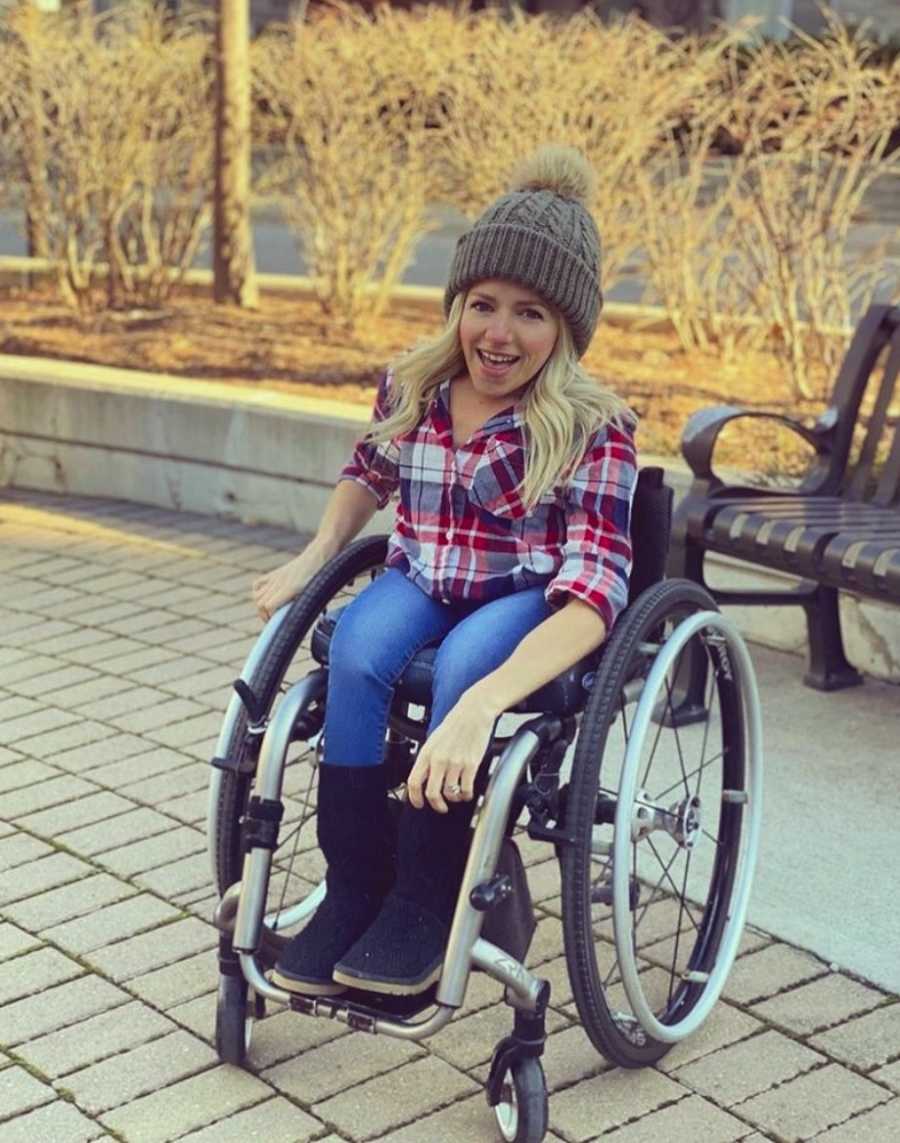
After completing University, I took on graduate studies in the field of communication sciences and disorders. Having had so much experience with medical professionals and rehabilitation services growing up, it was natural for me to want to pursue a career in this area as well. My parents always had the highest expectations of me. They saw my strengths and knew there was much I could excel in, while also being realistic with things that might be challenging. A job as an orthopedic surgeon, for example, dealing with large limbs on a high operating room table may have presented a number of barriers for my small stature. When I learned about the profession of speech-language pathology, I knew this would be a perfect fit! Working with the mouth and throat was something I could handle, while still being able to provide compassionate care to others in a healthcare setting.
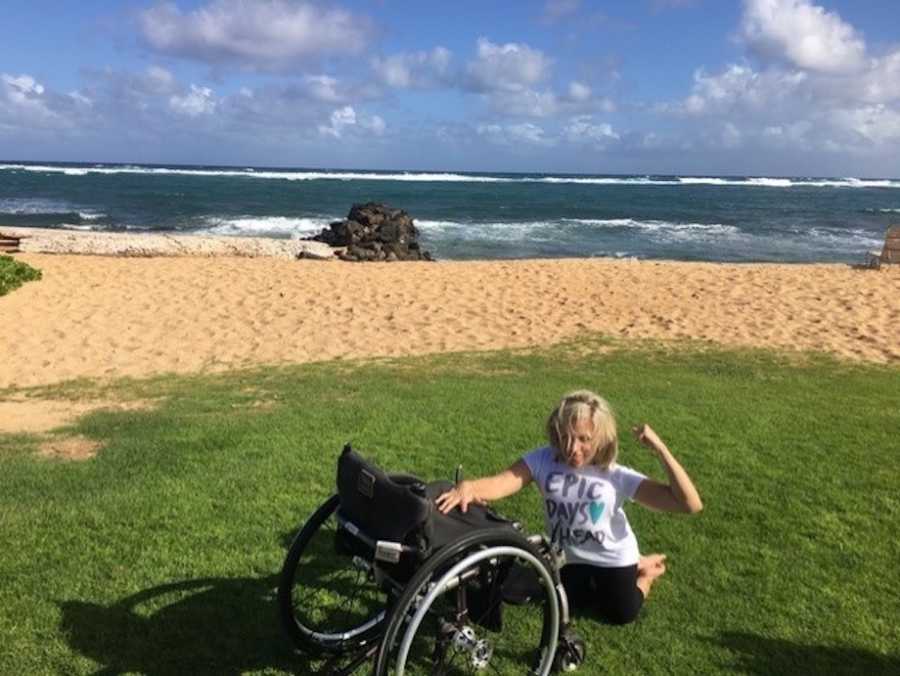
While completing my Master’s degree, I was denied clinical placements from supervisors after disclosing my disability, without even a conversation or face-to-face meeting. Assumptions were made about my abilities (or lack thereof) that were false. As disabled people are often required to do, I worked that much harder to prove I was able to competently handle my responsibilities and duties. I graduated in 2010 and this year, I’m celebrating 10 years as a Speech Language Pathologist at an inpatient rehabilitation center working with people who are recovering from a stroke. I love being able to offer care and patience to others and I love being let into someone’s life story and learning how I can best use my skills to support them. I believe my many years of experience as a patient now helps me as a healthcare professional work collaboratively with my patients.
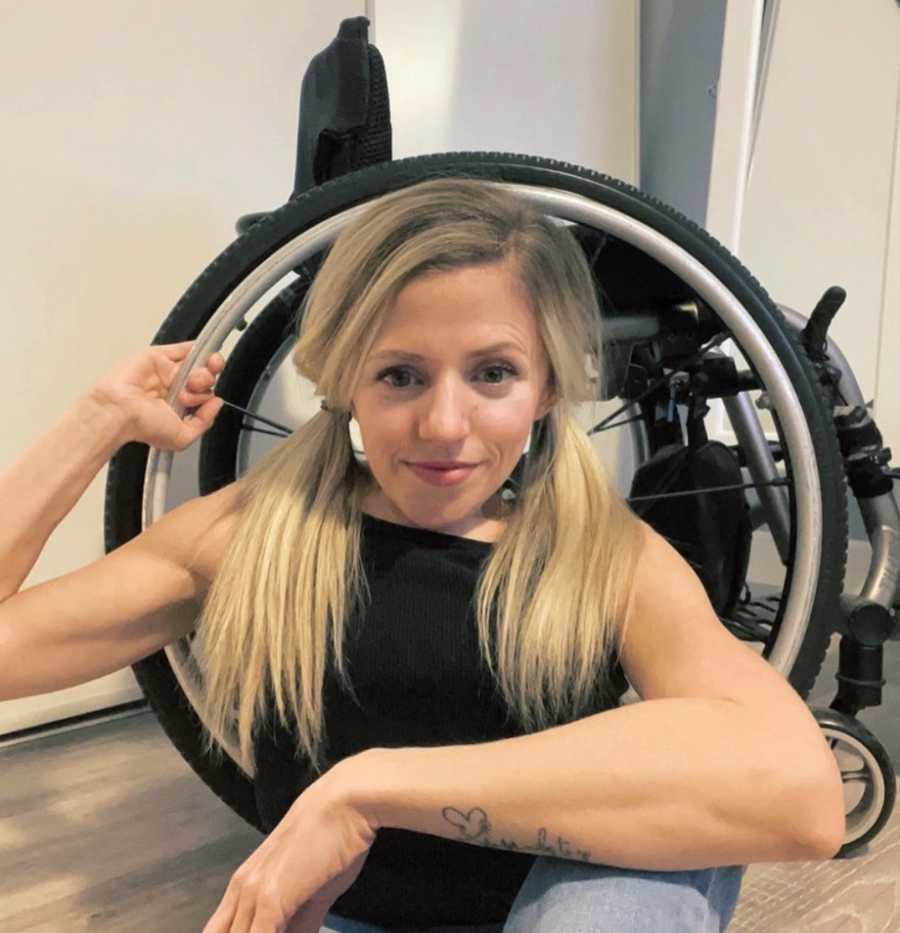
I married my husband in 2013 after meeting online in 2006, back when internet dating was still considered taboo! We chatted for about a month before deciding to meet each other. It wasn’t obvious from my profile I used a wheelchair, but as we talked more and made plans to meet, I told him about my disability. He has since told me he didn’t completely believe I used a wheelchair until he saw me sitting there at our meeting spot! He thought I was testing him to see if he was shallow! Unfortunately, that exemplifies the way many people view disability. He already knew I was in University, I was a synchronized swimmer, I was often out with my friends, I drove, I lived on my own, so then hearing I was also a wheelchair user, in his mind, just didn’t fit!

Sadly, most people don’t associate ‘disability’ and ‘wheelchair user’ with ‘good, successful life.’ Mark is often called a hero or a saint by people we don’t know, simply for being with me. He is wonderfully fantastic, of course, that’s why I married him! But it doesn’t take a hero or a saint to marry someone with a disability. Instead, until general perceptions about disability really begin to change, it does take someone who is willing to challenge their own beliefs, be open to different perspectives, and be comfortable enough with themselves to do so. Mark was willing to recognize that what he thought he knew about disability was wrong. He doesn’t see ‘past’ my disability because my disability is part of me! He sees it, he sees me and he loves all of me! By acknowledging my disability, he is also able to see where discrimination and inaccessibility exist and he is able to be an amazing advocate for me and an ally to the disability community, and I absolutely love that!
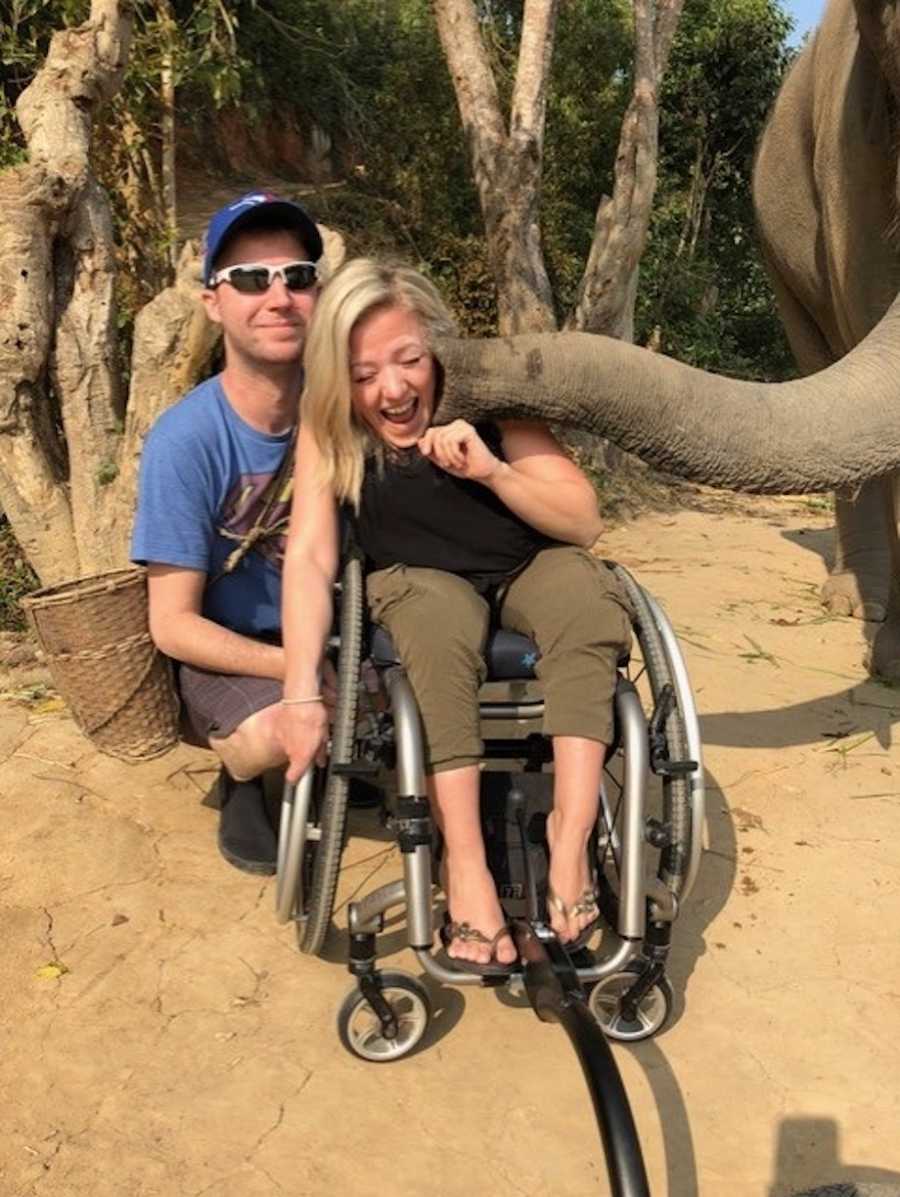
Like any other couple, we bring our own talents, interests, and traits into the relationship. We both take care of day-to-day chores and have a routine that works. We love adventure and we love to travel! Together, we’ve made fresh pasta on the hilltops of Tuscany, rode a gondola through the canals of Venice, bathed elephants in Thailand, watched lions mate in the tall grass on Safari in Kenya, hiked the National Parks in Utah, and sailed the crystal clear waters of the Caribbean. I do all the planning, researching, and budgeting, while Mark does the carrying and lifting! We cannot wait to get back out into the world as the Covid pandemic finally begins to settle down. We hope to achieve our goal of visiting 40 countries before we turn 40!
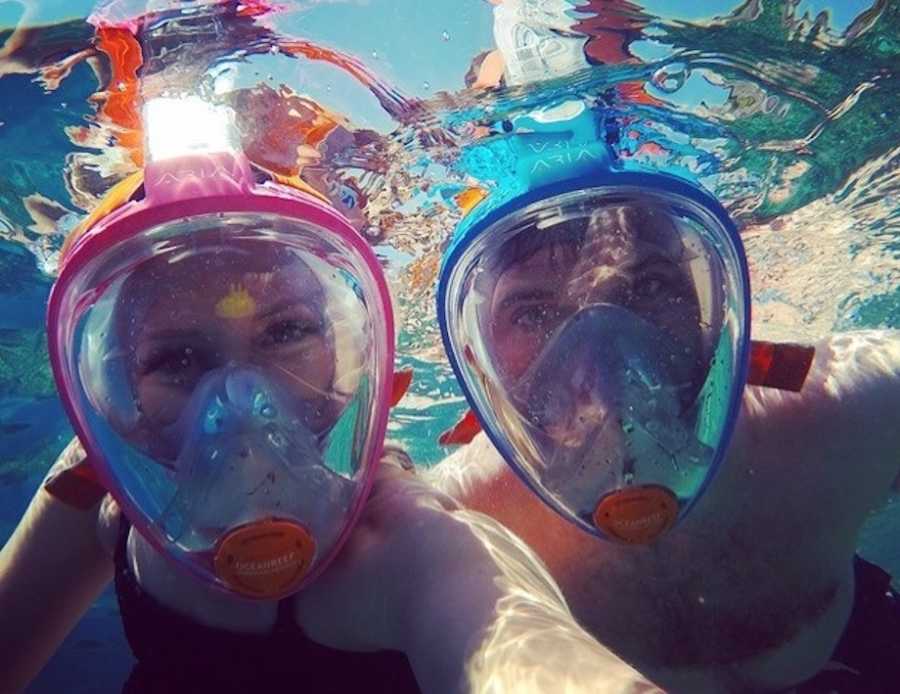
I’m happy to share a glimpse into my life and my perspective on disability whenever I have the opportunity because I want to amplify the message from so many other disabled voices that disability is not inherently bad and ‘disabled’ is not a bad word or something we need to dissociate from a person. My disability is part of who I am and has undoubtedly helped shaped my life into what it is today. When I have success, I am not overcoming my disability. My disability is never going away and that’s okay! What I suppose I do overcome are the barriers that exist in a world that was not at all designed for me; a world where accessibility is still so much an afterthought and a world where people still believe harmful negative stereotypes about disabled people.
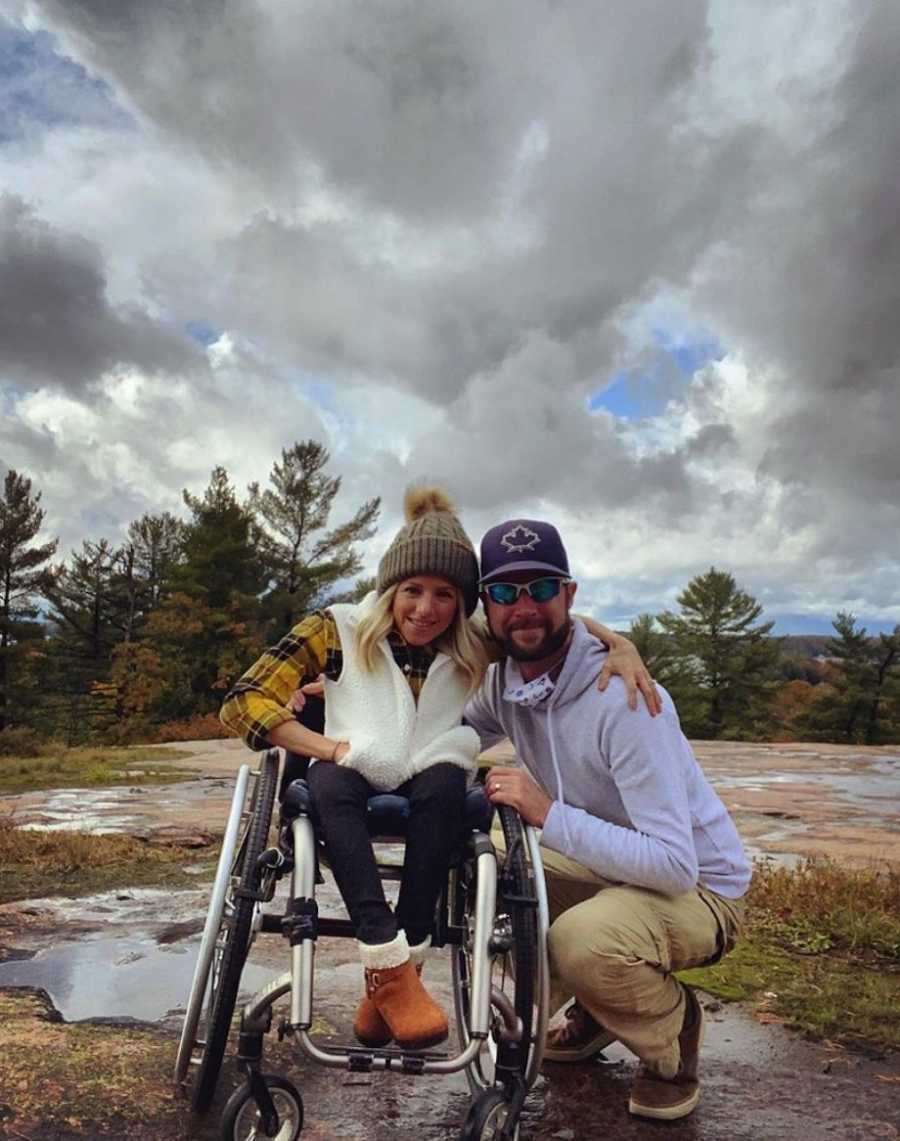
I don’t need pity or a pat on the back, but instead what I wish for is greater advocacy from the non-disabled community; help in removing the barriers that continue to exist, both structural and attitudinal. I wish for more people to learn more about disability history and culture and to learn it directly from disabled people. Challenge your assumptions, question your beliefs because in the words of the late disability advocate Stella Young, ‘disability does not make you exceptional, but questioning what you think you know about it, does.'”
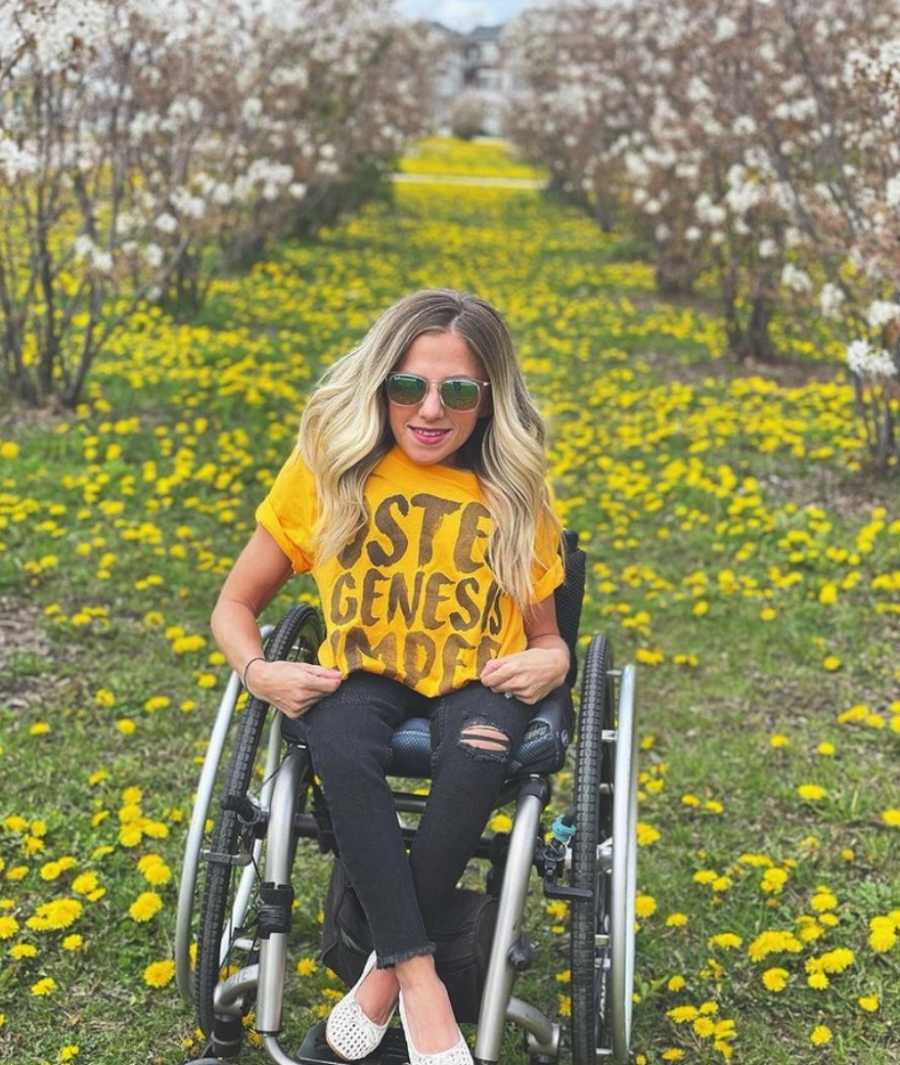
This story was submitted to Love What Matters by Kristin Victoria from Ontario, CA. You can follow their journey on Instagram and their blog. Do you have a similar experience? We’d like to hear your important journey. Submit your own story here. Be sure to subscribe to our free email newsletter for our best stories, and YouTube for our best videos.
Read more stories like this:
Do you know someone who could benefit from this story? Please SHARE on Facebook to let them know a community of support is available.

